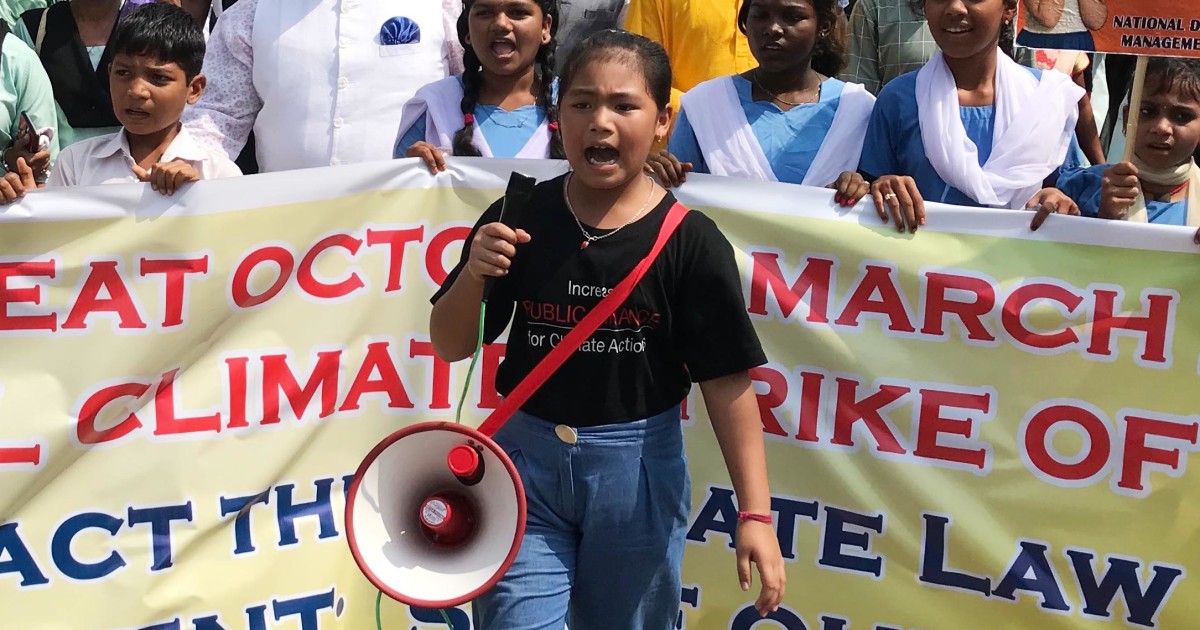Growing up in India, Licypriya Kangujam has already felt the impact of climate change. Now it is up to the United States and other rich nations, she says, to compensate for the “loss and damage” being suffered by countries like hers.
The 11-year-old, known as Licy, is one of India’s most vocal climate activists as well as one of the youngest people at the United Nations climate talks in Egypt this month.
“My generation is the victim of climate change, but I don’t want our future generations to face the consequences of inaction by our leaders,” she told NBC News by phone from Sharm el-Sheikh, a resort town on the Red Sea where leaders and diplomats from almost 200 countries are gathered for the event, known as COP27.
“This is a fight for the future of our planet — our future.”
“Loss and damage” funds are on the summit agenda for the first time, and have been demanded by dozens of developing nations — including many in South Asia — that say rich nations should pay for historical emissions that are the main cause of climate change today. The U.S., which had previously blocked the idea, now says it is open to discussions.
Licy, who sold tea and coffee at a market stall outside New Delhi to raise money for her trip to COP27, said she plans to hold the governments there accountable.
“Our leaders keep giving beautiful speeches,” she said. “They keep blaming each other for climate change and fail to take up collective efforts.”
About one billion children around the world are at “extremely high risk” of exposure to climate and environmental hazards, according to Unicef. Licy found herself among them in 2018, when Cyclone Titli ripped through India’s coastal areas.
The storm and the resulting floods killed scores of people and affected 6 million in the eastern state of Odisha, where Licy then lived. The catastrophe inspired her to become a climate activist.
“I saw children losing their parents, many lost their homes,” she said. “I wanted to do something for my people and for my generation.”
The following year, Licy and her family moved to New Delhi. The move gave Licy and her younger sister access to better education, but they struggle with air quality in New Delhi, which has been called the world’s most polluted capital.
Smog in the city of 20 million was exceptionally bad the week before the climate summit, leading to the closure of schools and other curbs on activity. One Twitter user called the situation a “crime against humanity.”

Of the world’s 50 most polluted cities, 42 of them are in India, Pakistan and Bangladesh, according to Swiss technology company IQAir.
But pollution is not the only climate challenge South Asia is grappling with. A record-shattering heat wave in India and Pakistan earlier this year threatened hundreds of millions of people as well as the crucial wheat harvest, in what scientists say is likely to become an increasingly common event.
Summer flooding in Pakistan that was described as the worst in the country’s history killed more than 1,700 people, left a third of the country underwater and displaced 32 million people, or half the population of Britain. Millions more have been affected by deadly flooding this year in Nepal, India and Bangladesh.
Speaking at the climate summit on Monday, Pakistani Prime Minister Shehbaz Sharif said his crisis-hit country needed debt relief and climate compensation after the floods, which caused $30 billion in damage.
Millions of people are heading into winter without shelter or livelihood, he said. Huge lakes of stagnant water have transformed the landscape in the south, giving rise to water-borne diseases.
Share your story or advertise with us: Whatsapp: +2347068606071 Email: info@newspotng.com















